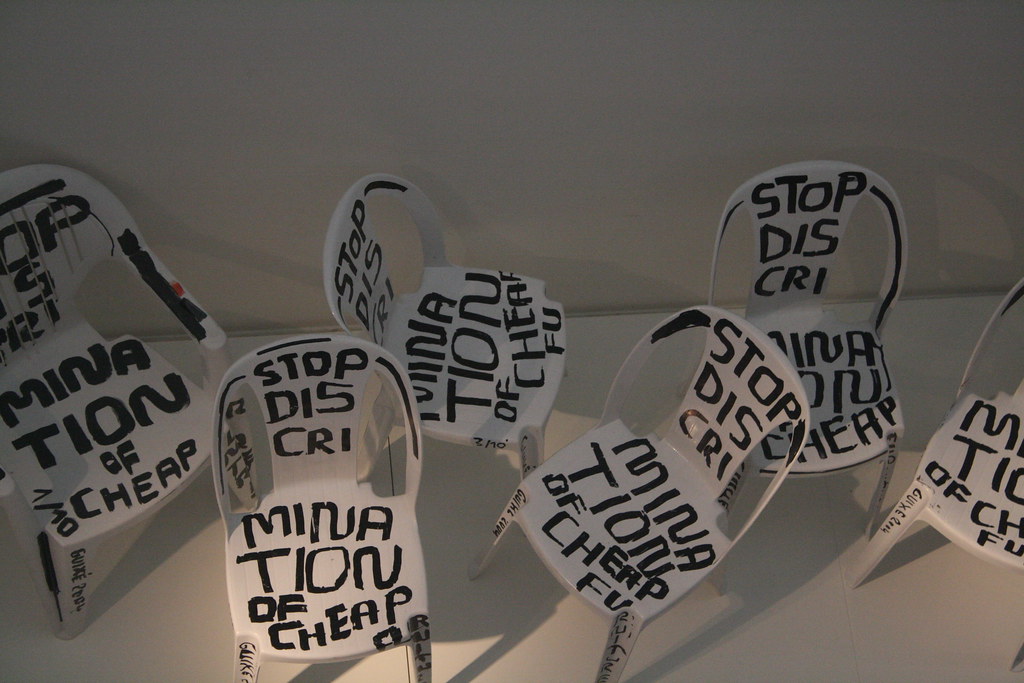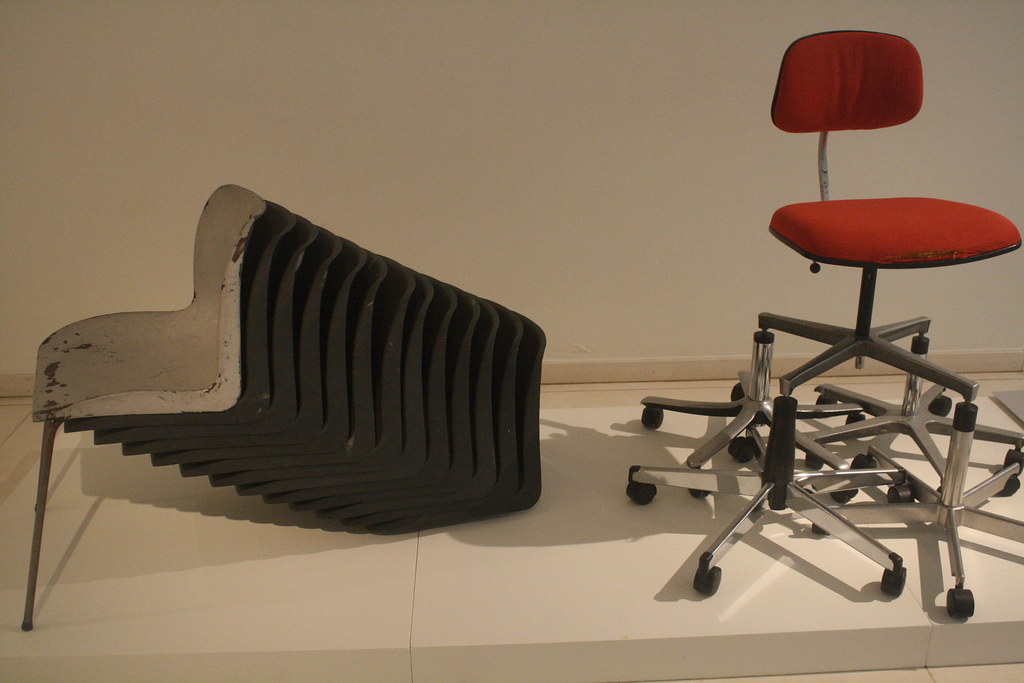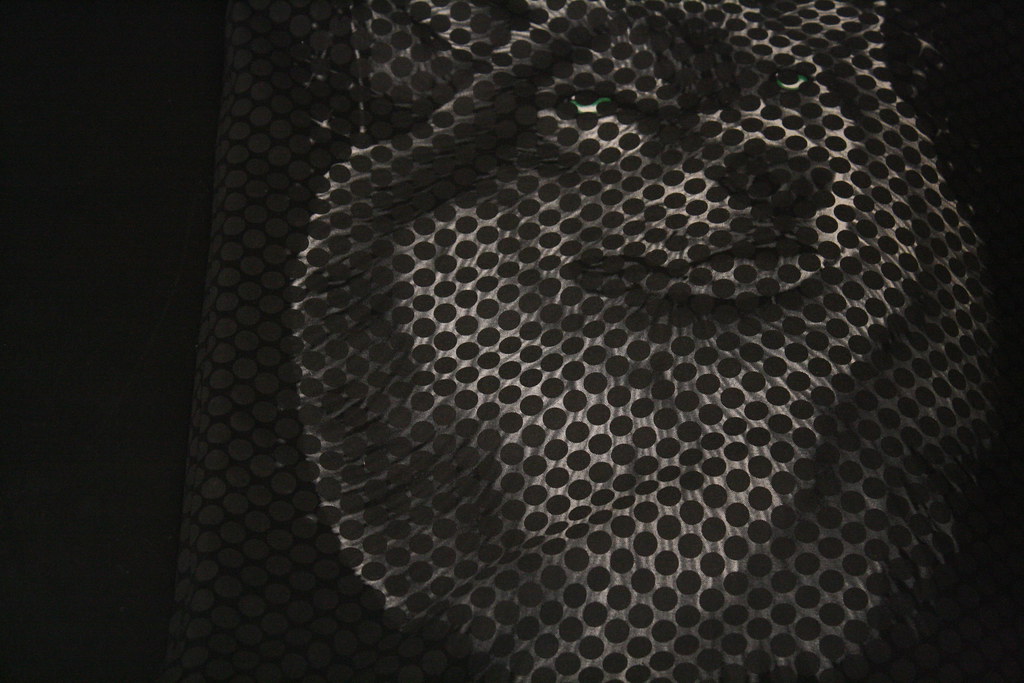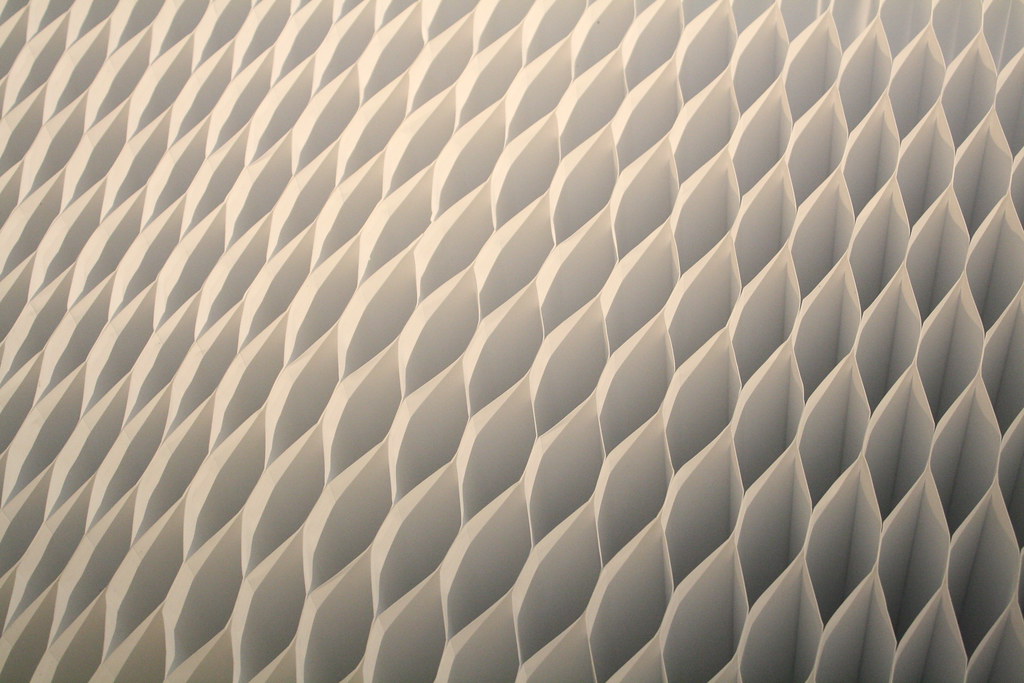While in Ghent last month, I made a definitive point to not only experience the night life of the various music festivals, but also visit as many museums as my packed itinerary and poor feet could handle. The first one of the whole trip that I headed to was the Design Museum Gent, which happened to be a short walk of about three blocks away from my hotel.
As is standard with museums, there were both permanent and temporary exhibitions, but it was one of the latter which caught my attention in particular. It was called Destrøy/Design and it had just begun a week or two prior (it runs July 7 – Oct. 21). Heading down into the underground floor of this multi-level building, I was immediately taken by the familiarity of the chairs below the staircase and to the left, which reminded me of many Santa Rosa evenings of my teenager years spent sitting on the front steps while my parents sat in their white plastic porch chairs and drank wine.
The Destrøy/Design exhibit (or at least part of it) was on loan from the Frac Nord-Pas de Calais, an art institution located in the far north of France, just 10 kilometers from the Belgian border. The institution itself is part of the Fonds Régionaux d’Art Contemporain (FRAC, or Regional Fund for Contemporary Art in English), something created in 1982 to support international contemporary art in France.
I am no expert, but from what I understand, Frac Nord-Pas de Calais emphasizes the idea that everyday objects and design can co-exist and exert influence on one another. In particular, the role of this exhibit was to make visitors question how objects function in our lives, and what or where the line is between an object with an assigned role versus that same object as art.
Overall I thought it was an interesting concept, although not necessarily a new one, or one I hadn’t thought about before. Still it was interesting to see the ways in which artists either exaggerated the practical purposes of the objects, or totally subverted the norm. Both, I think, had a similar effect for the viewer. And while I am not an artist in the conventional sense, nor do I claim to know anything about design, the playfulness of what I did see was something I enjoyed, particularly because it reminded me of my own continually evolving relationship with words and language.
My main complaint about the exhibit is that it is spread across a handful of museums. From what I understand, at least, there was only a small fraction at the museum in Ghent, with other museums in other cities and countries displaying additional parts. I don’t feel that the pieces need to be a “whole” in order to be understood, as each makes its own statement. However, I simply found it fascinating enough to want to see more than the limited amount that actually were on display.
Leave a Comment



